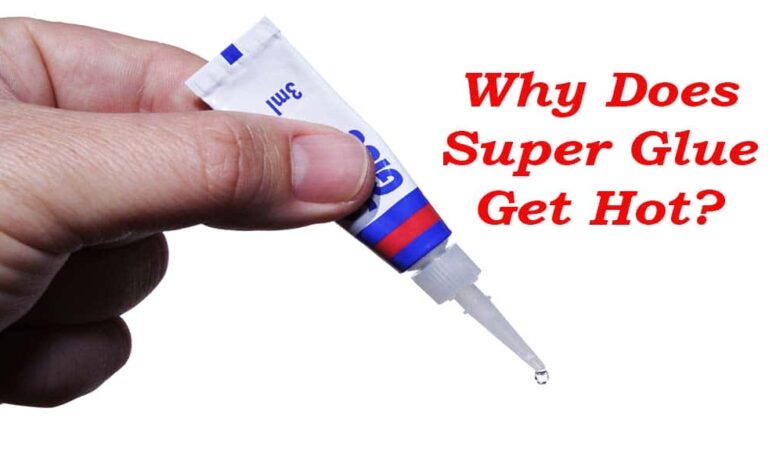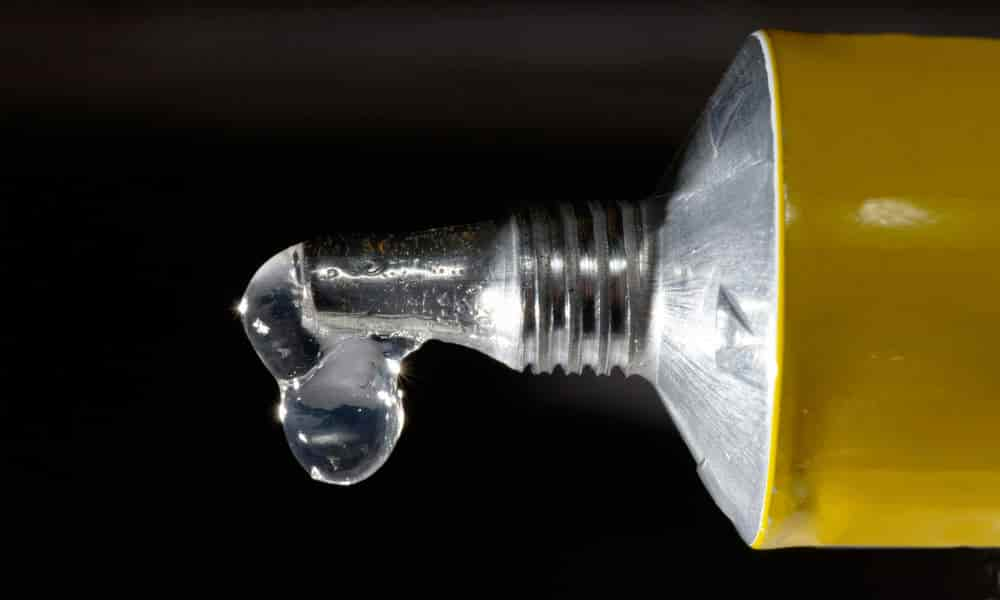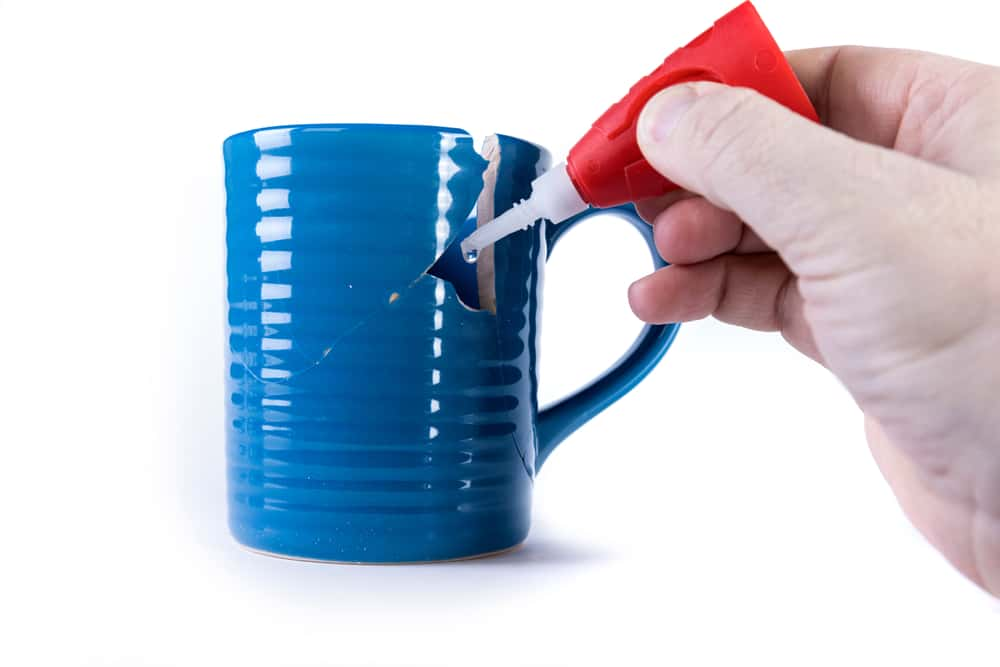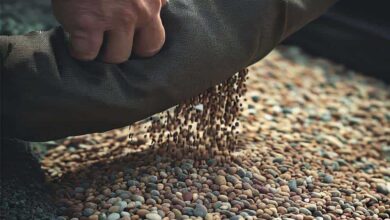Why Does Super Glue Get Hot? Know The Science Behind It

Have you ever noticed that familiar surge of heat when using super glue to mend broken items or seal surfaces? It’s not just your imagination; that remarkable adhesive indeed gets hot during the bonding process. But why does super glue get hot or generate that captivating warmth?
Super glue gets hot due to an exothermic chemical reaction between the adhesive and moisture in the air. This heat production occurs when the cyanoacrylate molecules in the glue polymerize, forming strong bonds.
However, keep reading to explore the reasons behind this heat generation and learn more about the properties and uses of super glue.
Why Does Super Glue Get Hot?

When we use super glue to bond surfaces together, we’re witnessing an enchanting dance of molecules. This simple adhesive reveals a fascinating chemistry that holds the key to its remarkable performance. Have you ever wondered why it gets hot during the curing process?
Let’s dive into the magical reasons behind this phenomenon.
1. Exothermic Reaction During Polymerization
The secret lies in the process called polymerization. As we apply super glue, its individual building blocks, called monomers, start linking together, forming long chains and creating a powerful bond. But here’s the magical part: During this bonding process, an exothermic reaction takes place, releasing heat.
Why does this happen?
Within the monomers of superglue, there are unstable double bonds between carbon atoms. When we apply the glue to a surface, these double bonds break, and new bonds form with the atoms on the surface. As this happens, energy is set free, leading to the delightful generation of heat.
2. The Spellbinding Dance of Chemical Bonds Formation And Breakage
The art of bonding surfaces with superglue involves the enchanting dance of forming and breaking chemical bonds. This intricate ballet contributes to the mesmerizing release of heat. Here’s how it unfolds:
Super glue contains a captivating compound called cyanoacrylate, which rapidly reacts with moisture in the air.
The cyanoacrylate molecules skillfully form strong bonds, linking the surfaces together.
The process of breaking and forming these chemical bonds demands energy, and as a result, we’re treated to the spellbinding release of heat during the curing process.
3. The Fascinating Friction Between Molecules
To add to the magic, the adhesive properties of super glue can be attributed to the captivating friction between its molecules. When you apply the glue, the molecules come together, creating an enthralling interaction that leads to the generation of heat. It’s like watching a mesmerizing dance of molecules!
Here’s how it unfolds:
The molecules in super glue gracefully move and slide against each other as they flow onto the surfaces being bonded.
This beautiful movement creates friction between the molecules, resulting in the production of heat.
The heat generated during this dance of molecules plays a vital role in the efficient curing and bonding properties of super glue.
Super glue’s captivating heat is a result of the enchanting chemistry it displays during the curing process. The exothermic reaction during polymerization, the formation and breaking of chemical bonds, and the mesmerizing friction between molecules all contribute to its magical properties.
So, next time you feel the warmth, embrace it, for it’s a sign that your super glue is weaving its spellbinding magic, bonding surfaces together with elegance and grace.
How Hot Can Super Glue Get Before It Fails?
The temperature at which super glue (cyanoacrylate adhesive) fails can vary depending on the specific formulation of the glue and the materials it is bonding. In general, most commercial super glue products have a temperature resistance ranging from -40°C to 82°C (-40°F to 180°F).
At lower temperatures, super glue may become more brittle and less effective in maintaining its bond. It might lose some of its flexibility, making it prone to cracking or breaking under stress. At higher temperatures, the glue can soften and lose its adhesive strength, leading to bond failure.
It’s essential to consider the intended use of the bonded materials and the environmental conditions they may be exposed to. For applications involving extreme temperatures or continuous exposure to high heat, specialized adhesives with higher temperature resistance should be used.
Additionally, other factors such as the type of materials being bonded, the surface preparation, and the load or stress applied to the bond can also influence the overall performance of the super glue under different temperature conditions.
If you have a specific application in mind and need to know the exact temperature resistance of a particular super glue product, it’s best to refer to the manufacturer’s specifications or contact the manufacturer directly for more detailed information.
How Does Super Glue Work?

Super glue, also known as cyanoacrylate adhesive, works through a process called polymerization. Here’s a simplified explanation of how super glue works:
Chemical composition:
Super glue is made from cyanoacrylate monomers, which are small molecules containing carbon, hydrogen, and nitrogen atoms.
Surface contact:
When superglue comes into contact with a surface, it reacts with the moisture present on the surface (such as water vapor) or on the skin. This moisture initiates the polymerization process.
Polymerization:
The moisture triggers the cyanoacrylate monomers to rapidly bond together in long chains, forming a strong polymer. This chemical reaction happens quickly, usually within a few seconds to a minute.
Heat release:
The polymerization reaction releases a small amount of heat, which can sometimes cause a slight warming sensation when using super glue.
Bond formation:
The resulting polymer forms a strong and durable bond between the two surfaces it is applied to. The bond is nearly instantaneous, making super glue ideal for quick repairs and applications.
It’s important to note that super glue works best on surfaces that are clean, dry, and fit closely together. If there are gaps or contaminants on the surfaces, the bond may not be as strong. Additionally, super glue is not recommended for use on some materials like polyethylene, polypropylene, or Teflon, as it may not effectively bond to these surfaces. For bonding such materials, specialized adhesives are required.
Overall, the rapid polymerization and strong bond formation make super glue a versatile and widely used adhesive for various applications. However, users should exercise caution while handling super glue, as it can bond skin and other unintended surfaces together.
Still, we have a detailed article about does super glue work on fabric. You may like to read the article. To read, click here.
Safety Precautions To Avoid Burns Or Damage
When working with super glue and the accompanying heat, it is essential to take proper safety precautions. Here are some measures to consider:
- Protective gear: Always wear protective equipment like gloves and goggles to prevent any contact between the glue and your skin or eyes.
- Avoid skin contact: Super glue can cause burns and skin irritation, so take care to avoid getting it on your skin. If contact occurs, wash the affected area immediately with soap and water.
- Ventilation: Ensure that you work in a well-ventilated area to prevent inhaling any fumes produced during the curing process.
- Fire safety: Super glue can be flammable, so keep it away from open flames or sparks. Store it in a cool, dry place away from heat sources.
Do NOT Use Super Glue For
Do NOT use super glue for bonding flexible or porous materials, such as rubber or fabric. Opt for appropriate adhesives instead. Learn more about safe adhesive choices in our informative video guide. Don’t miss it! Watch now for expert tips and tricks.
Wrap
Understanding why does super glue get hot can help us use it more effectively and safely. The exothermic reaction that occurs when super glue comes into contact with moisture or certain substances generates heat, enabling the glue to bond quickly. While this heat is usually not a cause for concern, it’s important to follow safety guidelines and avoid contact with skin to prevent burns.
By knowing the factors that can exacerbate the heat production, such as applying too much glue or using it in hot environments, we can ensure a successful and safe application. Additionally, being aware of alternative adhesive options that may not generate as much heat can be useful in certain situations.
Remember to store super glue properly to prevent the premature curing process from occurring. Overall, a deeper understanding of why super glue gets hot empowers us to use it effectively and responsibly.



